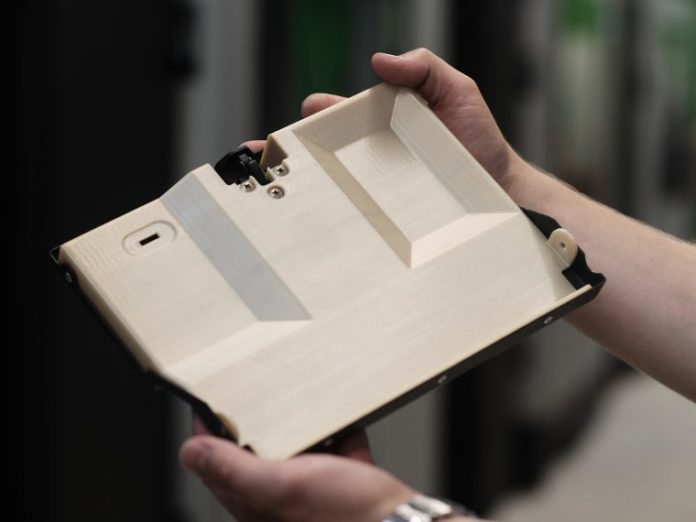Recent investments from AM Craft, Syqe Medical, 3DNA, IPF Ltd, Lillbacka Powerco Oy & EOS
Several companies recently purchased new 3D printing technologies and postprocessing technologies to enhance their production portfolio. This article shed light on the reasons that motivate their choices and covers AM Craft, Syqe Medical, 3DNA, IPF Ltd, Lillbacka Powerco Oy and EOS.
AM Craft, 3DNA and Syqe Medical chose Stratasys’ 3D printing technology
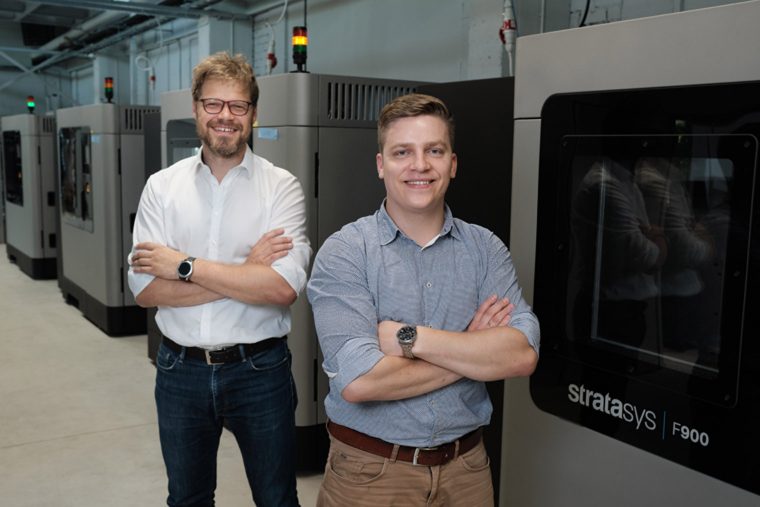
Latvia-based specialist aerospace additive manufacturing service provider, AM Craft enabled Stratasys to achieve one of its largest single orders to date by purchasing four large-scale Stratasys F900 3D printers.
The aerospace supplier aims to manufacture certifiable 3D printed parts for a much wider range of aircraft interior applications. Those applications will range from aircraft seating, paneling and ducting, as well as custom-made production within the cabin.
“In recent years, we’ve seen an ongoing demand for 3D printed production parts among major aircraft OEMs,” comments Jānis Jātnieks, Co-founder and CEO, of AM Craft. “Although COVID-19 has shocked the industry in the last few months, we are seeing efforts to return to business by remodeling passenger planes for cargo shipments, as well as projects to increase customer safety measures and improve the inflight customer experience – for example by providing mobile device charging stations and Wi-Fi infrastructures. In such cases, additive manufacturing is way ahead of slower and more costly traditional methods.”
“One of the mainstay pillars that enables us to realize this business case into real-world applications is Stratasys’ highly-repeatable FDM-based 3D printing technology in conjunction with aerospace-grade materials like ULTEM™ 9085 resin. Crucially, this gives us the capability to meet strict rules and regulations around certification that require the highest level of repeatability and traceability with every part manufactured,” he adds.
Another one that opts for the F900 3D printer is 3DNA. With the goal of serving the production needs of rail, mobility and drones, the Italian engineering service bureau plans to produce large-scale tools and final parts.
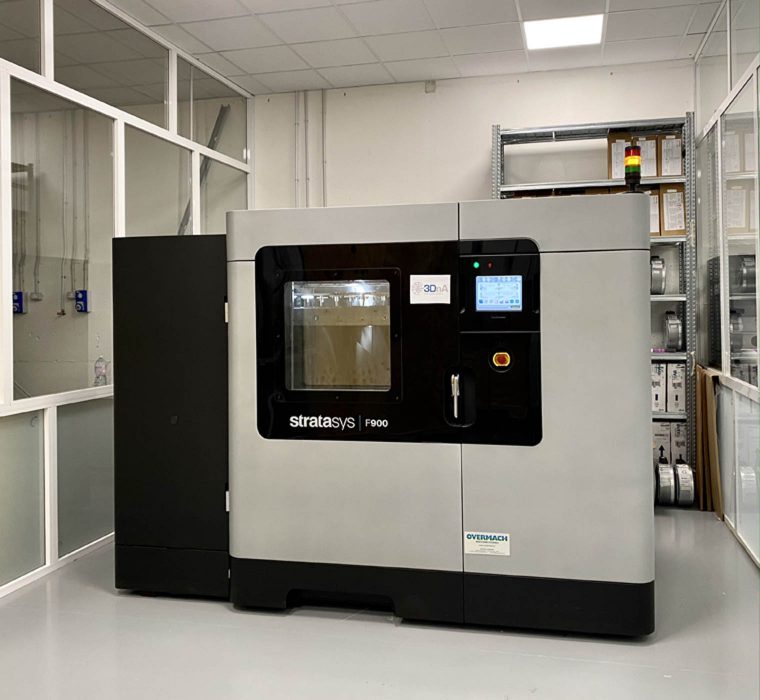
A few years ago, the company had acquired a Fortus 450mc 3D Printer that it used for both prototyping and end-use parts applications.
Over the last three years, 3DnA has been highly active in leveraging additive manufacturing for the design and production of both polymers and metals. The company has witnessed strong business growth of over 50% in industries such as aerospace, defense, automotive, medical, consumer goods, and security. 3DnA has also completed several high-level collaborative research and development projects having created a dedicated joint-lab (AMUV = Additive Manufacturing Under Vesuvius) together with the Center of Advanced Metrology and Technology Services (CeSMA) of Università degli Studi di Napoli Federico II.
According to Alessandro Manzo, General Director, 3DnA, the use of Stratasys FDM additive manufacturing to date has provided a strong foundation for the business.
“Our Fortus 450mc has proved to be an indispensable workhorse, enabling us to serve our customers’ applications needs in both design and production,” he says. “It gives us access to a range of advanced production-grade thermoplastics, such as ULTEMTM 9085 resin, which have strengthened our manufacturing capabilities and allowed us to meet the stringent requirements of several high-performance industries. We’ve produced 3D printed parts for aircraft cabins and luxury car interiors, right through to bio-compatible surgical guides for experimental spinal prosthesis.”
In the same vein, Israeli pharmaceutical company Syqe Medical Ltd equips its office with a J55 3D Printer. The recently launched 3D printer enables users to focus on full CMF (color, material, finish) capabilities.
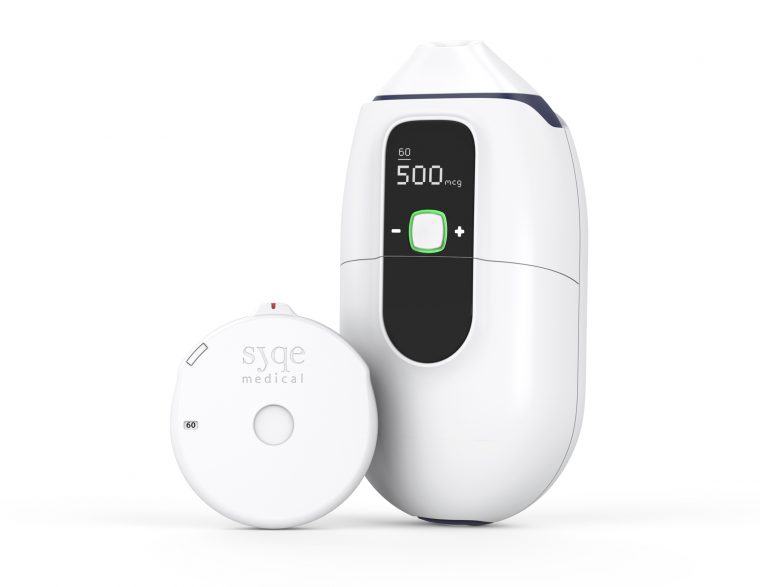
As Syqe develops technologies that allow therapeutic molecule delivery and administration by inhalation, it is critical that design concepts are true-to-life and can be validated for fit, form and function just like the final product.
For the inhalers, the company is using 3D printing for the chassis, casing, springs and several more elements of the design – with the J55 providing the needed precision and material capabilities to accurately reflect the final production part.
“Our products include very precise and intricate airways, which are usually less than 1mm in diameter,” explains Itay Kurgan, Product Development Manager at Syqe. “Achieving this level of complexity in the design of a prototype is very difficult, but the J55 allows us to incorporate such intricate structures into the design with a level of accuracy we’ve not seen before. We can undertake iterations much faster and earlier in the design process, which ensures we can better validate products before they reach medical trials or when we present them to specific customers.”
IFP Ltd invests in RPS Neo450s stereolithography
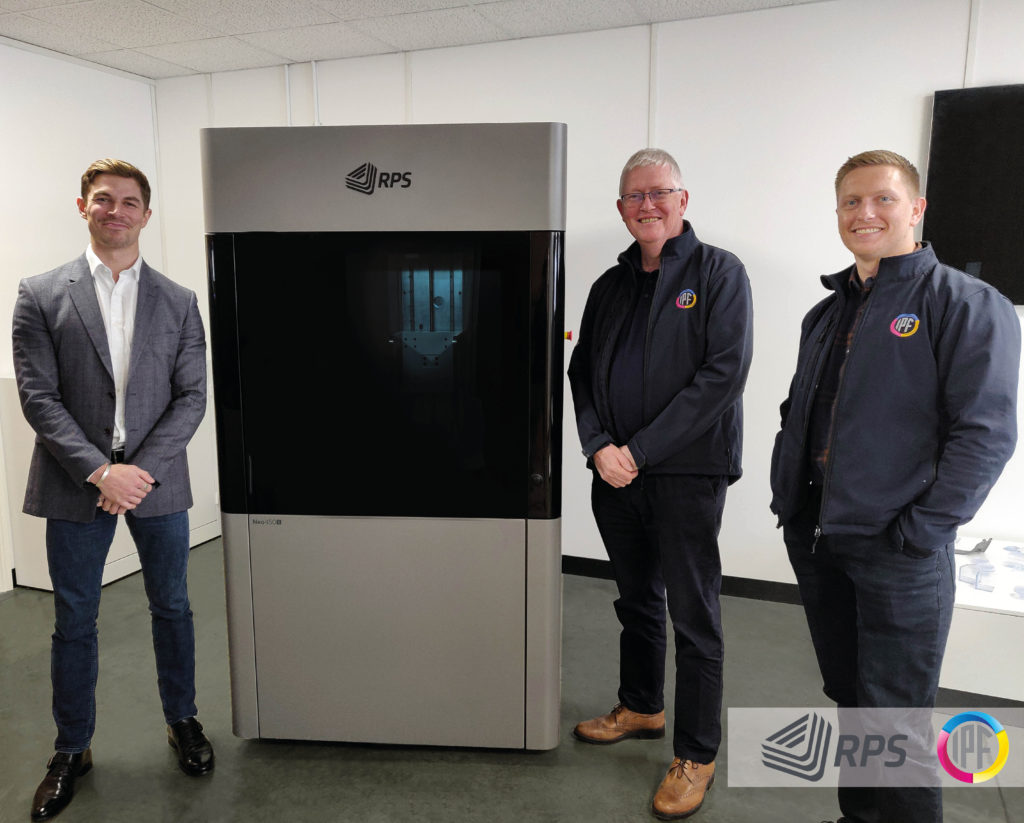
The recently launched RPS Neo450s stereolithography will now support the needs of British company IPF. IPF is a family-run business that provides services that range from plastic CNC machining and milling, plastic fabrication, 3D printing and diffusion bonding.
As an early adopter of 3D printing, the company has quickly realized the benefits of the technology. The recently launched Neo450s is designed for small to medium repeatable parts. It would be 40% faster than the Neo450e, another 3D printer of the Neo SLA series. For IPF, this acquisition is an opportunity to provide parts in both SD or HD detail, along with passing on any cost and lead time reductions.
Lillbacka Powerco Oy selects PostProcess’ automated surface finishing solution
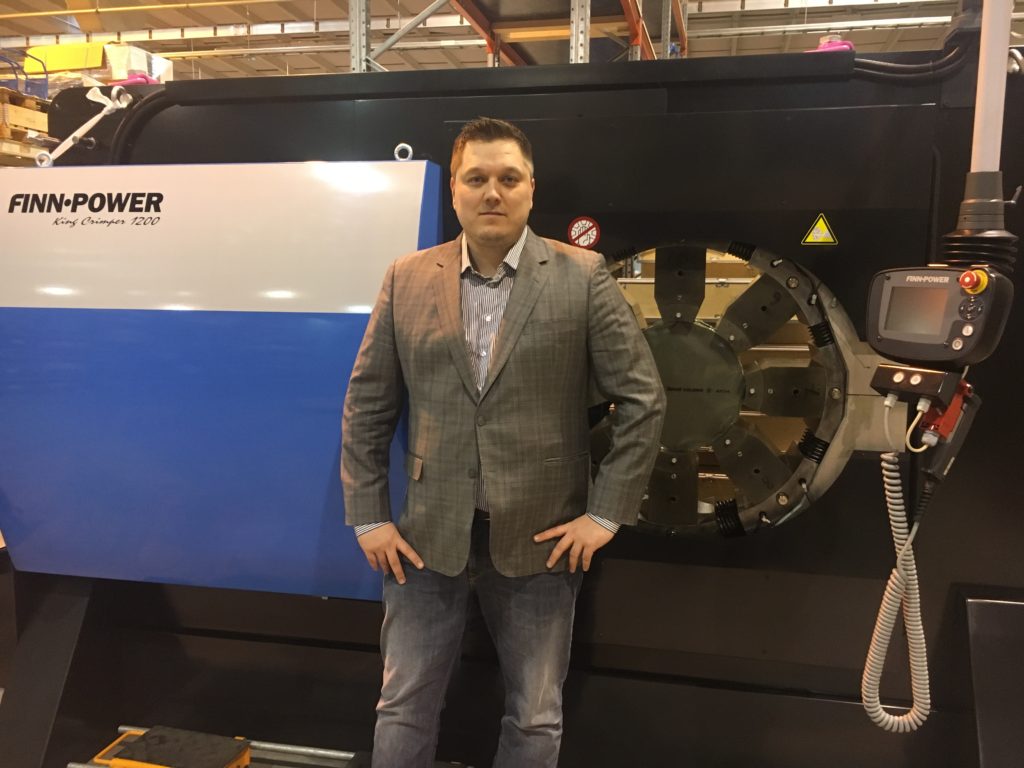
Finland-based company, Lillbacka Powerco Oy has chosen PostProcess’ RADOR™ automated surface finishing solution for the manufacturing of its customized end-use parts.
The Finnish manufacturer has been manufacturing crimping machines for over 50 years. Using Direct Metal Laser Sintering for production, the company can rapidly produce the end-use crimping dies that are instrumental to each machine, as well as for custom tooling requests.
Before turning to PostProcess, the company utilized traditional blasting procedures, that it found time-consuming to reach the expected finishing of printed parts.
The software-intelligent RADOR finishing solution integrates patent-pending Suspended Rotational Force (SRF) technology that consistently finishes parts from all print technologies to customer specifications via optimized energy with vertical motion and proprietary consumables.
“Though Lillbacka is employing the RADOR for metal finishing, this full-stack solution has been developed for use with all additive manufacturing print technologies and won’t break delicate parts. Like the entire surface finishing line, the RADOR has been designed with noise-reducing features for low dBA to prevent disruption in non-production environments”, PostProcess explains in a press communication.
EOS installs two automated powder removal from Solukon
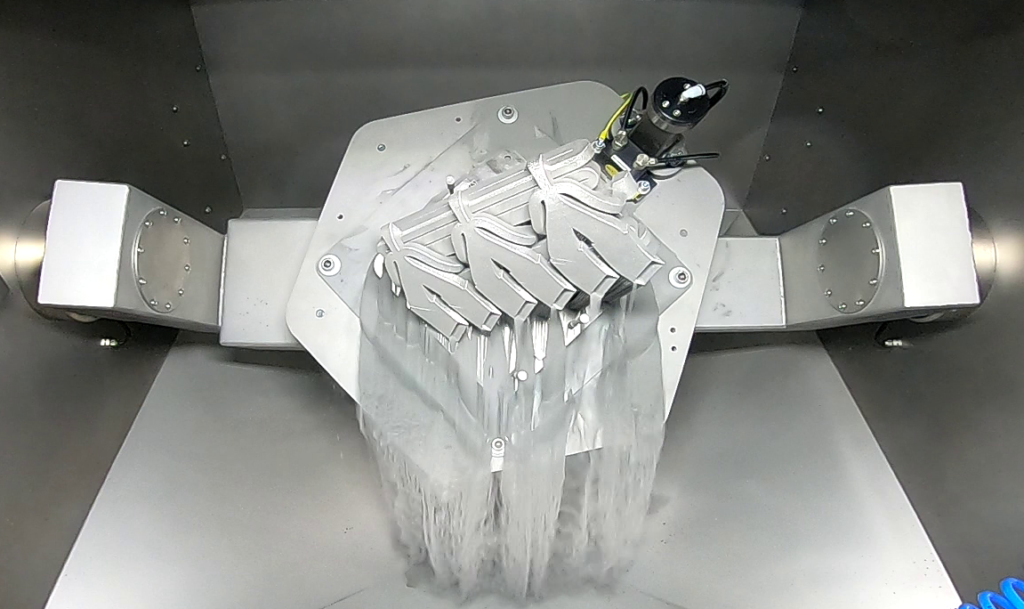
In the meantime, still in the postprocessing area, Industrial 3D printer manufacturer EOS installs two automated powder removal systems with SPR® technology (Smart Powder Recuperation).
The patented technology developed by Solukon Maschinenbau GmbH aims to enhance efficiency of the manufatcurer’s part-building process chain for application and product development at its facilities in Krailling and Maisach, near Munich.
In a press communication, Solukon explains that between the two locations, EOS operates approximately 50 metal AM systems for testing, application development and the printing of demo parts for customers, making it one of the largest operation centers of metal AM systems in the world. With the adoption of the two SFM-AT800-S Solukon systems, EOS has made the process of powder removal more efficient and comfortable, resulting in cleaner parts at less effort by its operators.
Remember, you can post free of charge job opportunities in the AM Industry on 3D ADEPT Media or look for a job via our job board. Make sure to follow us on our social networks and subscribe to our weekly newsletter : Facebook, Twitter, LinkedIn & Instagram ! If you want to be featured in the next issue of our digital magazine or if you hear a story that needs to be heard, make sure to send it to contact@3dadept.com



